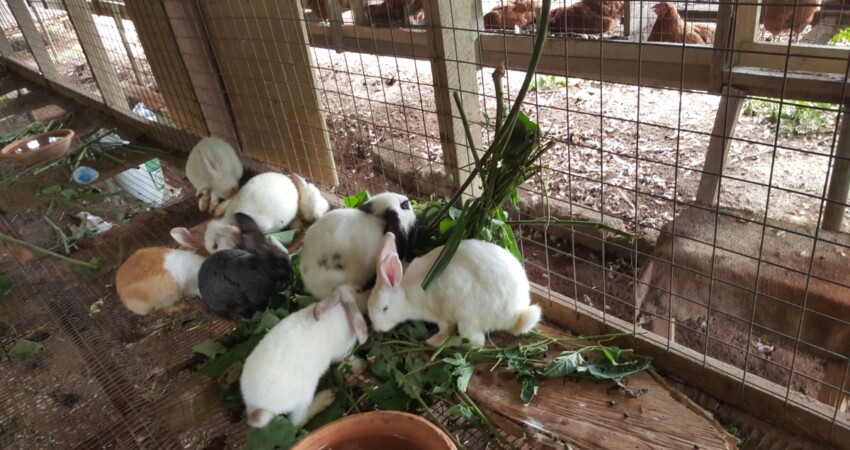

A number of management practices are vital when rearing rabbits.
Feeding
Feed them on greens, hay, home-mixed grains, and commercial rabbit pellets to meet all their nutritional requirements. Hay is given to the animals to stop diarrhoea and to aid the doe recover faster after kindling. Never feed damp or mouldy feeds to the animals to prevent bloating.
Overfeeding leads to a fat doe or buck that does not reproduce efficiently. An average doe needs 115-170g each day until kindling time. Give her 340 to 450g for three to five days after kindling, and then give her full feeds until the bunnies are weaned.
Do not give replacement stock, dry does and herd bucks more than 115-170g of feeds each day. Check regularly the bucks and dry does’ weights to be sure they do not become obese. Does and bucks that are about 2 to 4kg require 140 to 170g of feeds a day.
For maintenance of does and bucks that are about 2, 5 and 7kg, 85, 115-170, and 200g of feeds a day is enough. For pregnant does that are about 2, 5 and 7kg, offer them 115, 115-170, and 255g of feeds a day. Commercial rabbit pellets contain enough salt. Under normal conditions, block or spool salt is not needed.
Diseases
Diseases are natural and can never be completely eliminated, but you can keep them at bay by:
– High resistance, long-life, and high productivity can be inherited. Breeding stock selected on the basis of superior performance will pay well.
– Do not overcrowd your animals and practice good nutrition
– Provide plenty of ventilation by avoiding wire floors, but use materials that permit plenty of sunlight on the walls.
– Keep all equipment clean and dry to minimise the chance of disease outbreak.
– Avoid unnecessary handling of animals. Your clothes and hands can spread diseases.
Housing and equipment
A good rabbitry has the roof 3.2 to 3.5m high, sloping south-north to avoid exposure to vertical heat. Rabbit equipment also comes in handy, and they include;
Cages
All-wire cages are the best as wooden parts are not sanitarily convenient. A 30x30x18 inches (length, width and height) wire cage is large enough for a doe and litter or buck. Have few extra cages for isolation and two or three cages for each 50 working does. The extra cages will help isolate sick animals and host new breeding stock. Clean the cages daily for loose hair, remove boards (if you have them) since they promote unsanitary conditions. A stiff bristle brush makes cleaning easy.
Feeders
Metal feeders are recommended because they are easily kept clean. Wooden feeders are easily chewed by rabbits.
Watering systems
Though the automatic nipple-type water system is best as it makes water available all-day and requires little maintenance, one can also use crocks (made of baked clay) and open waterers. Drinkers should be regularly cleaned and periodically checked for leaks.
Nest boxes
Nest boxes should give the doe seclusion, provide adequate ventilation and protect litter from harsh conditions. Wire bottoms are not practical in nest boxes since the doe burrows to the bottom to kindle her young one.
Also, they may not be warm enough during cold seasons and expose the young ones to cold. Place the nest box in the cage on the 28th day of pregnancy. Fill each box two-thirds full with clean hay or straw, then add clean fur from other does’ nests as bedding material.
 Contact Jaguza Support
Contact Jaguza Support